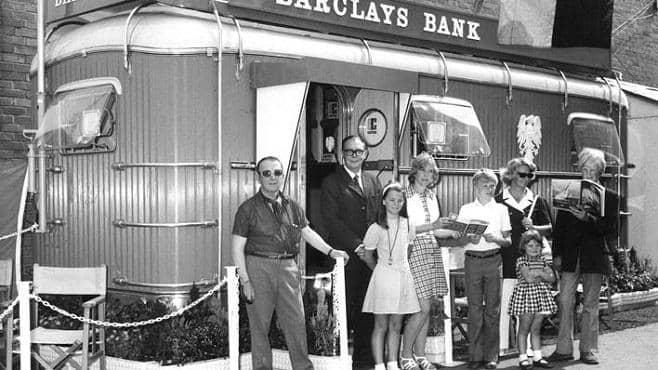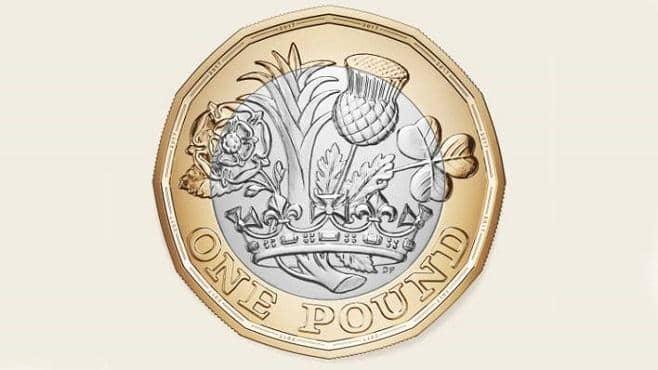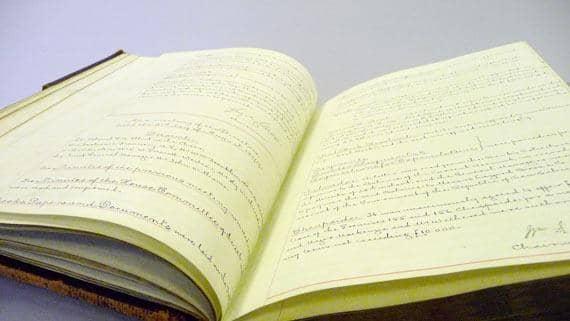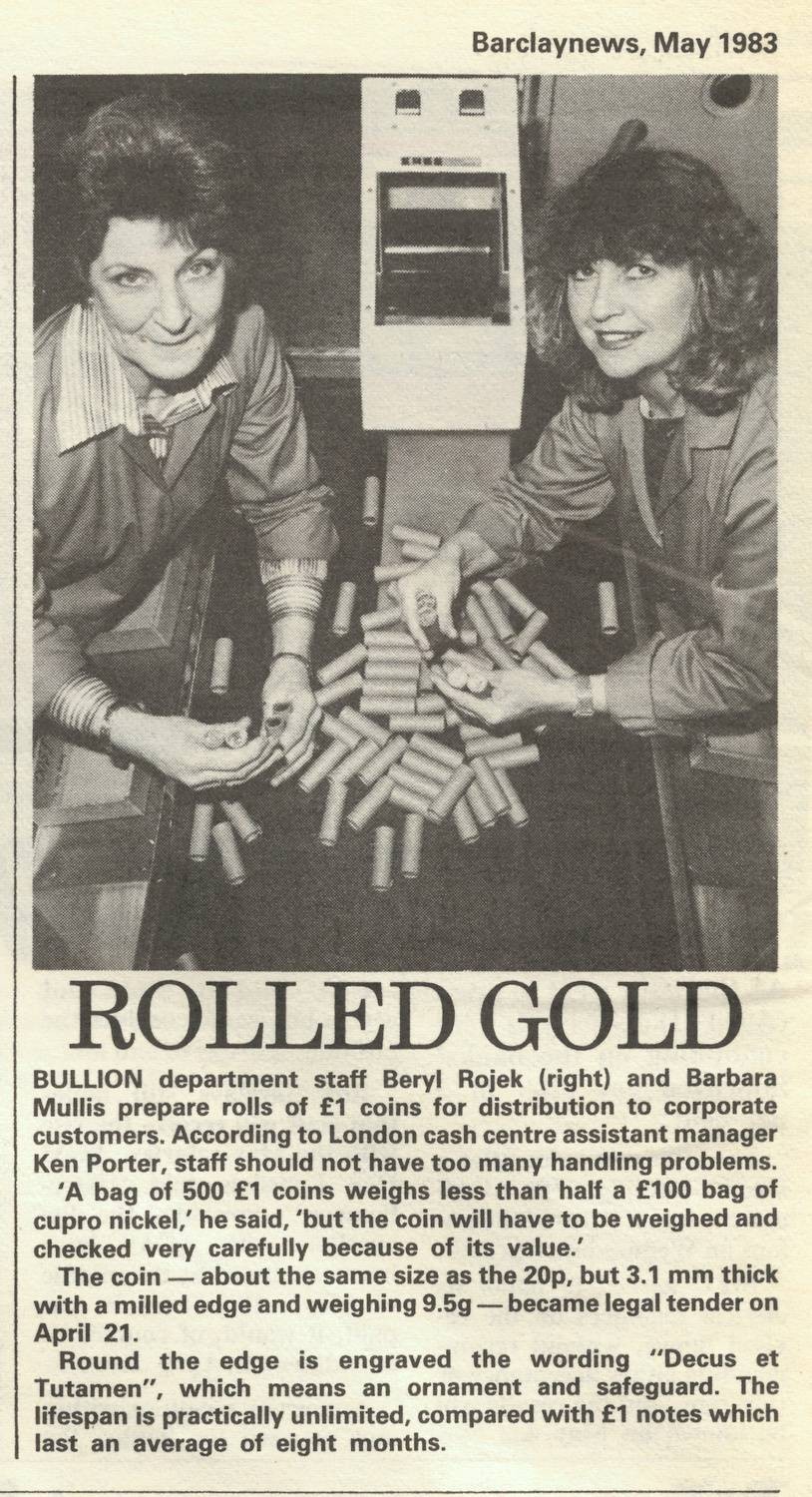
From the archives: Banks in unusual places
Barclays’ commitment to meeting customer needs has seen the bank conduct business in the unlikeliest of places

It was April 1983 and David Bowie was at number one in the charts with ‘Let’s Dance’ when the original £1 coin was introduced, 34 years ago next month, replacing the 186-year-old £1 note.
The fashion-conscious might be seen sporting shoulder pads or a Hawaiian shirt – popularised by Joan Collins in Dynasty and Tom Selleck in Magnum, PI. Almost unimaginably now, car seatbelts had only just become mandatory and smoking was still commonplace on flights and across public transport.
Two months after the coin’s launch, Prime Minister Margaret Thatcher, fresh from victory in the Falkland Islands conflict the year before, would be voted in for a second term in a general election that also saw two future prime ministers – Tony Blair and Gordon Brown – elected as MPs for the first time.
Within Barclays, the bank had launched a new ‘high technology’ group to support 'start-ups', appointed Mary Baker, the bank’s first ever female director, and become the first to open on Saturdays.
The decision to replace the £1 banknote with a coin was made in 1981, when it became apparent that the decline in purchasing power made the £1 unit of currency better suited to a coin than a banknote. The note was in use for only nine months on average, whereas a coin can last 40 years or more.
The £1 coin was designed to be thicker than other coins to make it easier to identify and was made from nickel-brass – a combination of copper, nickel and zinc. The ‘gold’ colour allowed it to stand out from the cupro-nickel ‘silver’ coins already in circulation.
The reverse design featured a detailed depiction of the Royal Coat of Arms designed by Eric Sewell, Chief Engraver at The Royal Mint. The inscription around the edge is the Latin phrase ‘DECUS ET TUTAMEN’, which translates to “An ornament and a safeguard.”
The Barclaysnews staff newspaper marked the 21 April 1983 launch of the new coin with an article about members of the ‘bullion department’ preparing rolls of £1 coins for distribution to corporate customers.
London cash centre assistant manager Ken Porter reassured in-branch colleagues that they should have no problem handling the coins. “A bag of 500 £1 coins weighs less than half a £100 bag of cupro nickel,” he said. But, he cautioned: “The coin will have to be weighed and checked very carefully because of its value.”
The Barclaysnews staff newspaper marked the 21 April 1983 launch of the new coin with an article about members of the ‘bullion department’ preparing rolls of £1 coins for distribution
Days are numbered for the ‘round pound’
Today, a new 12-sided coin replaces the existing ‘round’ pound coin. The decision was taken because the current coin is so easy to fake – the Royal Mint says that as many as one in 30 are counterfeit coins. The new coin’s distinctive shape and a range of high security features (including a secret one) make it far harder to fake.
The old pound coin will be ‘demonetised’ on 15 October but Barclays, other banks and the Post Office will continue to accept the coin indefinitely. Old coins will be sent back to the Royal Mint for recycling into other world coins.
The ‘heads’ side features the fifth coin portrait of the Queen while the ‘tails’ side was drawn by teenager David Pearce, who beat 6,000 other people to win a competition to design it. The image features four plants representing the UK’s four nations – the leek, thistle, shamrock and rose – coming out of a royal crown.

Barclays’ commitment to meeting customer needs has seen the bank conduct business in the unlikeliest of places

For as long as there has been currency, there have been counterfeiters

It’s not every day you see someone strutting around in a three-stripe suit, decked out in the colours of a credit card

Barclays Group Archives are home to the records of Barclays PLC and its predecessors, dating from 1567 to the present day
